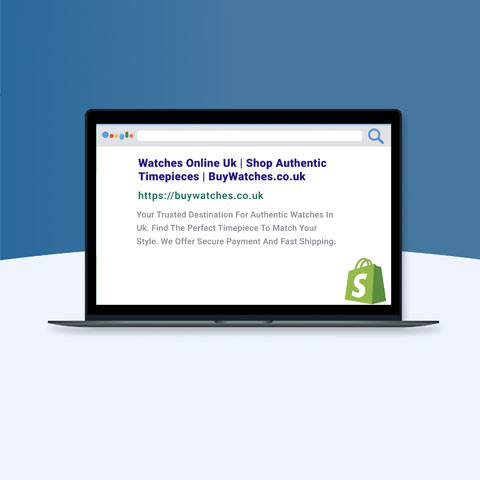Maximising Short-Term Change - Without Jeopardising Brand Health


So many people keep talking about the ‘new normal’ we are all going to see when this global pandemic ceases, but what does that actually mean and more importantly, what do you need to do to get through this period and still be in the right position for the long term – maximising short term change without jeopardising long term brand health.
I think two things can be banked on to help that planning:
“Buying behaviours are different and will continue to be so…
...however, customer needs have NOT changed”
Let me explain…
Here are some examples of changing buyer behaviours and shifting priorities:
- Increase in demand for online purchases
- Different product ranges becoming popular online, having previously been considered instore purchases
- The increased use of different channels by customers at an increasingly broad ranging set of times
- Things like email engagement rates increasing as people are in positions to read digitally more
- Content in general becoming a more important factor in buying journeys
- More specifically, people understanding about health and safety, not just around deliveries (although that is the number 1 concern) but also about how they are being managed at source in places like warehouses and stores
Needs and wants are still the same
But what does not appear to have changed and if anything has been solidified by these uncertain times, is the requirement from customers that you understand them and tailor your products and services to them – personalisation is hugely important.
People expect communications to be joined up, for a brand to be sync’d across all points of contact and for the brand to anticipate their needs and tailor the experience and products accordingly.
Therefore, data is the key. To achieve the above, with an ever-changing set of behaviours, you need data up to date and tied up across sources.
It really is all about the data
Data is going to be critical to achieve quick, short term changes, as well as ensure consistency and stability for long term growth. But not just ‘data’ - connected data is the key.
- You want to have a joined-up message across different channels = connected data
- You want to send personalised messaging to customers = connected data
- You want to interact with consumers at the right time, in the right channel = connected data
So, let’s talk about a couple of classic uses of data and how they continue to be important in the short term, even if the inputs and outputs of them might change.
Customer segmentation
This is certainly still critical, both short and long term. You already know it needs connected data. Whilst some of the previous segments will still hold firm in these uncertain times, new segments will appear and be important to monitor and manage.
One’s to keep an eye on could be:
- Existing online customers that are now moving into new product categories
- Customers that are not just new to you but actually new to online shopping in general
- Those that are already brand loyal to you, but offline and they are venturing into your digital presence for the first time
- The classic browsers that previously never bought are now suddenly converting!
- People new to home delivery that were previously big on click and collect
Customer journeys / experiences
Clearly an area where the changing world is affecting what would have been the preferred journeys. Just a couple of examples of changes in this area would be:
- Some of the new customer segments will be expecting more in their experience around security than you’ve probably seen for years. We all remember a time when security was a critical part of the conversion journey, well I think those times might well be back for a key new segment of your visitors
- Expect the conversion journeys to start including a lot more use of content, particularly value add messaging. It’s all about building TRUST and whilst for a long time you’ve tried to remove all delays in the funnel, now is the wrong time for that
Trust will be key
Ultimately, I see TRUST becoming an increasingly important factor in buying decisions moving forward. Price sensitivity is never going to go away but I think we are all seeing a pattern where people are considering purchases more and potentially buying less but buying for more thoughtful reasons.
A few studies I have seen recently really support this
- According to GlobalWebIndex, 56% of people said the key influence for them would be “Those that best meet my needs”
- In an Airship study, 67% say that Trust is going to be key in them deciding if they do a repeat purchase
In some ways, what we are seeing from customers is a return to a simpler time, where its less about fancy marketing, pointless gimmicks or impulse buys, but finding the products that are right for them, from brands that understand them.
What’s important now, is what’s important to the future
Now that might seem like a pointless statement, but it is so true. The things that we should be focusing on short term in this pandemic, are actually the things that we SHOULD have been focusing on for the last few years and thus pushing on with them now can only be good for the long term health of your business.
People have talked about ‘digital first’ for a long time, but this pandemic has shown us that most businesses were not ready, just one example is the number of digital offerings that only really work if their stores were open!
I see three key things that brands will need to do:
1. Reassuring the Customer
It is vital you factor this into all messaging going forward. Customers want to understand how delivery works, they want to see what is happening to safeguard how the product is packed and managed.
Generally, a message of clarity and openness will be what reassures customers and builds the TRUST you are looking for. As one example of this, I recently read that 65% of consumers would favour buying from local and UK suppliers, so if that’s you, be open about this information.
2. Re-Evaluating Targets
This is so important, because unless you do, you’ll make bad decisions based on poor historical assumptions and targets. A great example of this is conversion rates. Let’s assume they drop off during this period.
Do you suddenly start messing around with elements throughout the buying journey? I hope not, because the reality of the different world is not being considered in your planning.
Conversion might take longer as people spend more time looking at reassuring content; you have new people shopping online for the first time that are not as confident and focus on security more; there is a global pandemic and people are spending less!
Also, don’t live in your digital bubble and focus on global metrics like share of wallet. You might be seeing great strides in online sales, but is that offsetting the loss offline, compared to your competitors?
3. Driving Innovation
This is always important, but takes on more importance in these times and it’s all about getting creative and trying things you would normally spend months and years planning, but in weeks or even days – just think of all the things you will learn!
This ranges from the local businesses using social media in village Facebook groups, through to companies like Pepsi selling direct to consumers for the first time or someone like John Lewis creating virtual nursery advisor appointments, so they can stay close to expectant parents, add value and build TRUST.
So, remember
- Short term behaviours will change
- Long term customer needs will not
And the way to cover both these requirements – good old-fashioned data. Good quality, well connected and always up to date.
Achieve that, you can not only survive a global pandemic of biblical proportions but build a sustainable long-term business.
Want more like this?
Want more like this?
Insight delivered to your inbox
Keep up to date with our free email. Hand picked whitepapers and posts from our blog, as well as exclusive videos and webinar invitations keep our Users one step ahead.
By clicking 'SIGN UP', you agree to our Terms of Use and Privacy Policy


By clicking 'SIGN UP', you agree to our Terms of Use and Privacy Policy
Other content you may be interested in
Categories
Categories

Want more like this?


Want more like this?
Insight delivered to your inbox
Keep up to date with our free email. Hand picked whitepapers and posts from our blog, as well as exclusive videos and webinar invitations keep our Users one step ahead.
By clicking 'SIGN UP', you agree to our Terms of Use and Privacy Policy






![[Research] Apps: The Secret Engine of Ecommerce Growth [Research] Apps: The Secret Engine of Ecommerce Growth](https://images.bizibl.com/sites/default/files/apps-and-web-similarweb-480.jpg)


